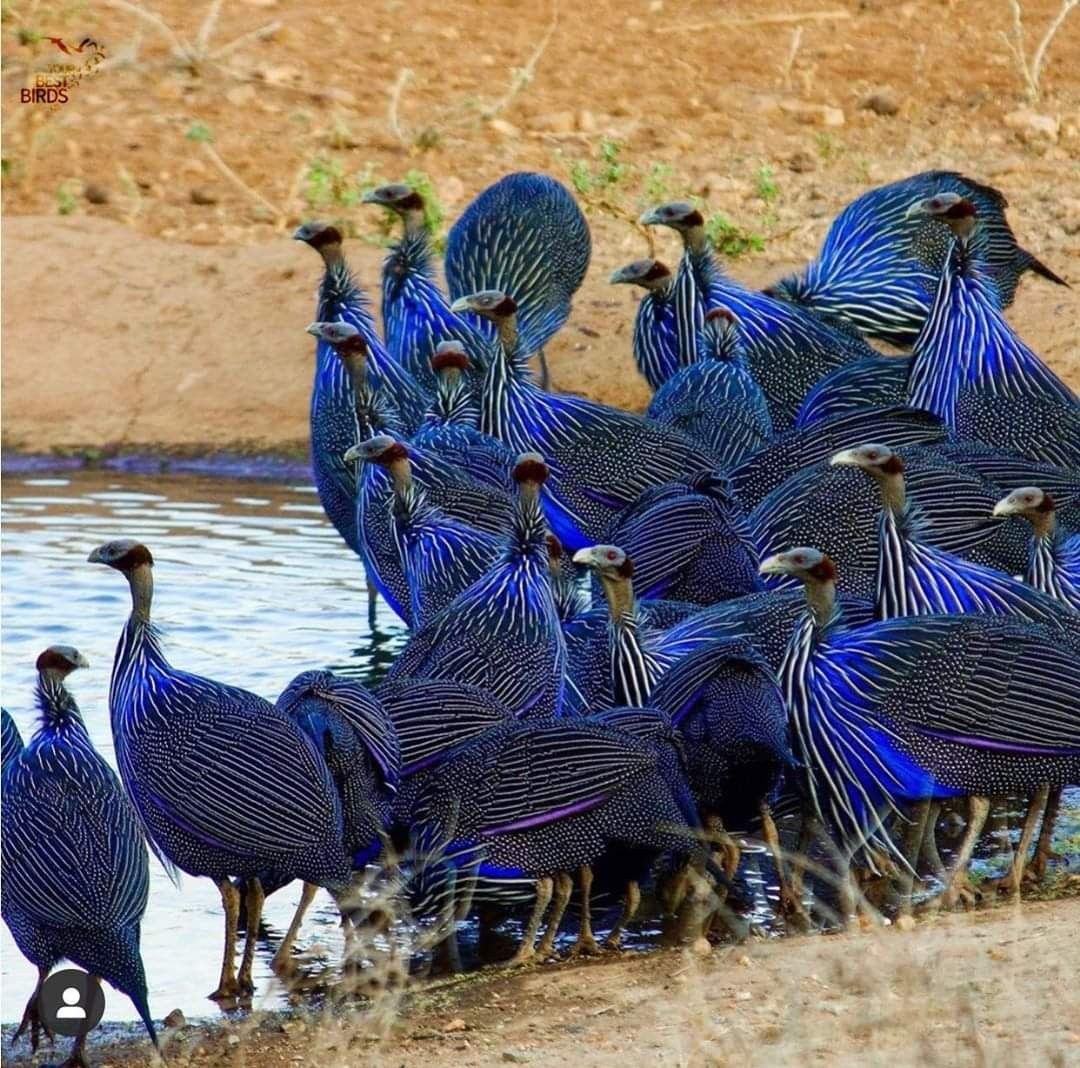The Vulturine Guineafowl (Acryllium vulturinum) is one of Africa’s most visually arresting ground birds. With its cobalt-blue breast, white-streaked cape, and glossy black feathers dotted with tiny pearls, it looks more like a creature from myth than the savannas it inhabits. Its bare, vulture-like head only adds to its prehistoric elegance — a strange blend of beauty and menace.
Found in the dry scrublands and savannas of East Africa, especially in Kenya, Ethiopia, and Tanzania, this guineafowl prefers running to flying. In tight-knit flocks of up to 20 or more, they move swiftly across the landscape — low to the ground, heads bobbing, always alert for danger.
But beneath the armor lies a story of abundance. During the breeding season, a single female can lay up to 30 eggs in a well-hidden scrape on the ground — one of the largest clutches among land birds. The eggs are camouflaged and carefully guarded, and when they hatch, the chicks emerge as tiny, downy runners ready to keep up with the group.
Social to the core, Vulturine Guineafowl roost together in trees at night, communicate with sharp, metallic calls, and maintain complex group structures. Their flocks are so cohesive that scientists have compared them to primate social systems — built not just on kinship, but on bonds and alliances.
Bold. Blue. Bound by family and survival.
